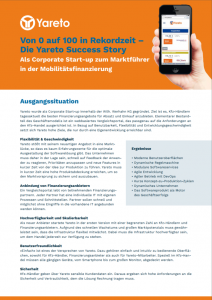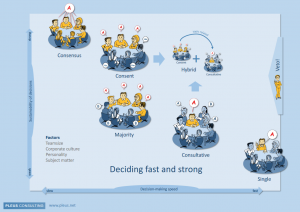Agile is successful, efficient and (often) fun. That’s why many companies are trying to be more agile these days. Basically it seems to be easy to apply agile practices and frameworks such as Scrum, Lean Startup or Design Thinking to get started with Agile.
However in reality many, especially larger companies are having problems doing this. From my observations the main reason for this is existing corporate culture. These companies want to be agile but are not willing to significantly change their culture and mindset. They often adhere to bureaucracy, hierarchy and zero mistake policies. This approach has obviously helped them to grow and be successful in the past. When it comes to agile this causes a culture clash which is almost inevitable. These companies can be compared to Elephants. Strong and powerful but inflexible and slow.
There is another kind of animal out there. Squirrels. Squirrels are fast, flexible and full of energy. In other words they are agile. You’ll find these companies in the startup scene, but not only there. Some larger firms spin-off smaller companies in order to gain flexibility. The new companies are free to act autonomously and independently from the originating company. In this scenario the Elephant funds the Squirrel and acts as a sponsor.
Elephants mainly come from the Classic Economy whereas Squirrels can primarly be found in the Creative Economy.
There may be some exceptions, but from what I have seen especially in Germany for many Elephants it is difficult to become really agile. They often try a little bit of Scrum-but and wonder why the agile silver bullet does not fly properly for them. It is not the size that hinders them (amongst others Microsoft and Ericsson are examples of successful or ongoing transitions). For Elephants it is very hard to shift their mindset in ths way it is required to be truly agile.
This is great news for the Squirrels as the inflexibility of the Elephants opens up opportunities for them.
To make this topic more tangible, I created a little illustration which shows the difference between the agile animals (the roller skates represent agile and lean techniques 😉 ).

If you like it you can download this poster in A3 format.
If you want to be more agile and work for an Elephant company I would recommend the following options:
1. Change the Elephant’s mindset
Apply agile techniques straight away and start learning. Make sure the Elephant is able and willing to change the culture and mindset thoroughly. This might take a long time and a great deal of energy.
2. Work in partnership with Squirrels
Fund existing Squirrels or create spin-offs (also known as Corporate Startups) which act in full autonomy. This leaves the Elephant unchanged. Over time the market share might be moved from the Elephant to the Squirrel. Once the Elephant sees the Squirrell’s success, changing the Elephant’s mindset will be easier. 🙂
What do you think? If you have any other options, please send me a message …



